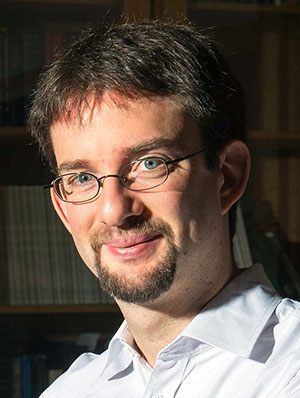Résumé
Many key industrial processes, from electricity production, conversion, and storage to electrocatalysis or electrochemistry in general, rely on physical mechanisms occurring at the interface between a metallic electrode and an electrolyte solution, summarized by the concept of an electric double layer, with the accumulation/depletion of electrons on the metal side and of ions on the liquid side. While electrostatic interactions play an essential role in the structure, thermodynamics, dynamics, and reactivity of electrode-electrolyte interfaces, these properties also crucially depend on the nature of the ions and solvent, as well as that of the metal itself. Such interfaces pose many challenges for modeling because they are a place where quantum chemistry meets statistical physics. I will review recent advances in the description and understanding of electrode-electrolyte interfaces with classical molecular simulations, and discuss in particular how to include some features of the electronic response in such simulations and their consequences on the interfacial properties.

